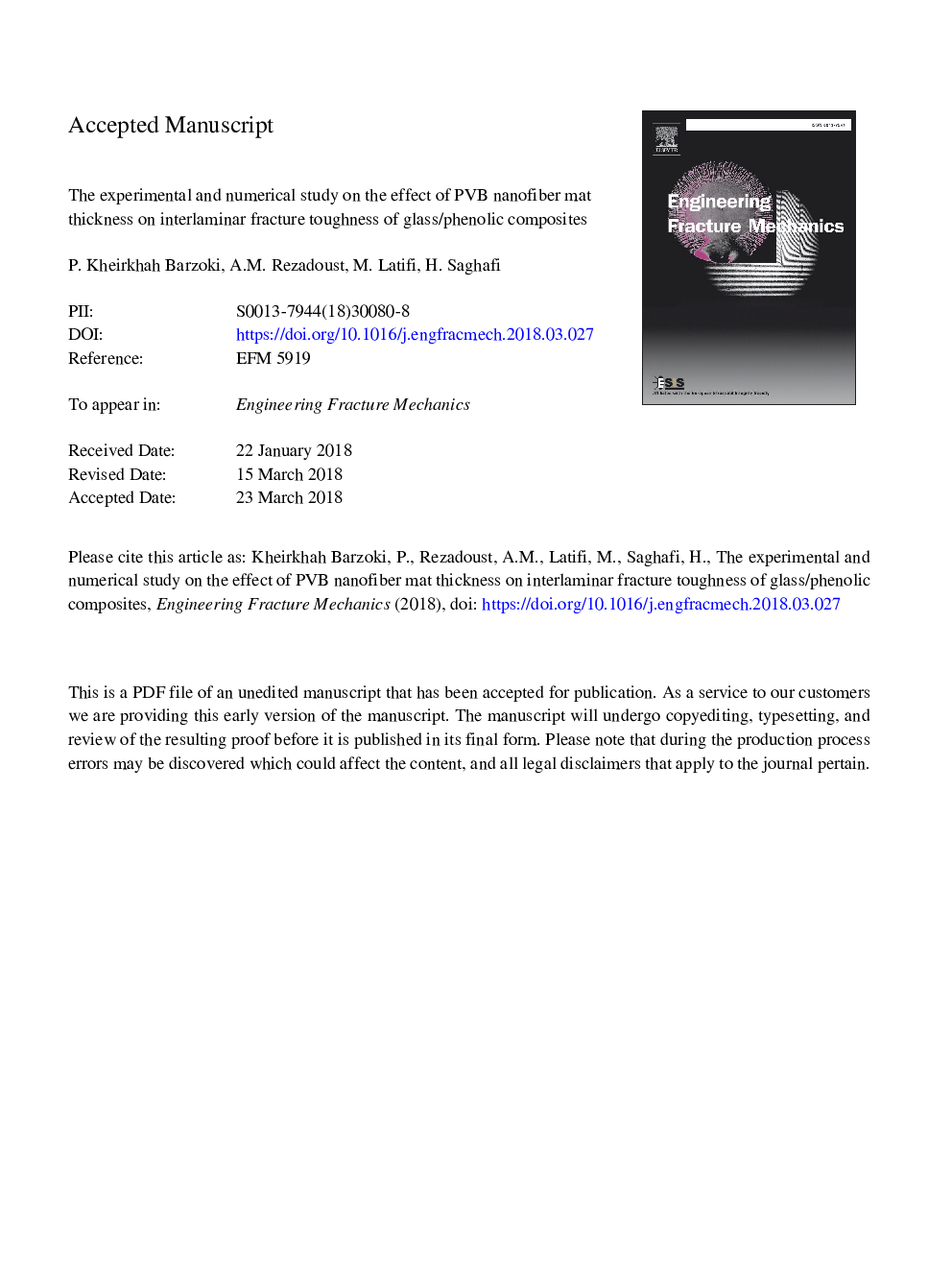| Article ID | Journal | Published Year | Pages | File Type |
|---|---|---|---|---|
| 7168879 | Engineering Fracture Mechanics | 2018 | 26 Pages |
Abstract
Delamination is one of the main problem in laminated composite materials especially in phenolic laminated composites. Recently, the potential of nanofibers to improve the fracture toughness of laminated composites has been proved. Therefore, in this study, the effect of (Polyvinyl butyral) PVB-nanoweb and its thickness on mode-II fracture toughness of laminated phenolic composite is considered using experimental and numerical methods. For experimental investigation, the fracture behavior of laminated composites has been determined by end notched flexure (ENF) tests using three different thicknesses of nanoweb (25, 45 and 65â¯Î¼m). On the other hand, finite element method (cohesive elements) is applied for numerical investigation of fracture behavior during mode-II loading. The results illustrated that thickness of nanoweb has an optimal value to improve the mode-II fracture toughness (GIIC) and when the thickness is more than this specific value, GIIC decreases. GIIC for optimal sample (web thickness of 25â¯Î¼m) rises up to about 29% in comparison to the reference laminate. It is also shown that bi-linear traction-separation law is a suitable method to model PVB-modified laminate under mode-II loading, and the effect of nanoweb thickness on cohesive parameters (K0, GIIC, Ïmax) is investigated. SEM images are also used to observe toughening mechanism during fracture test.
Related Topics
Physical Sciences and Engineering
Engineering
Mechanical Engineering
Authors
P. Kheirkhah Barzoki, A.M. Rezadoust, M. Latifi, H. Saghafi,
